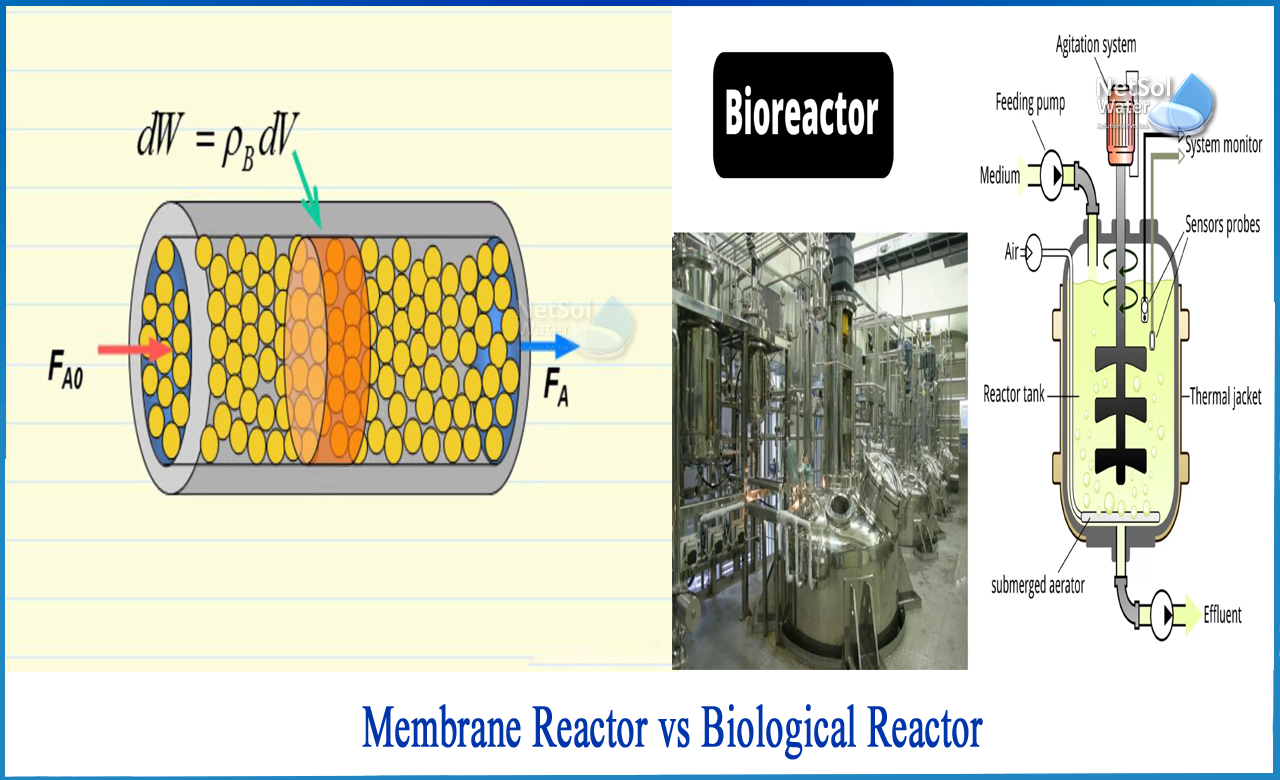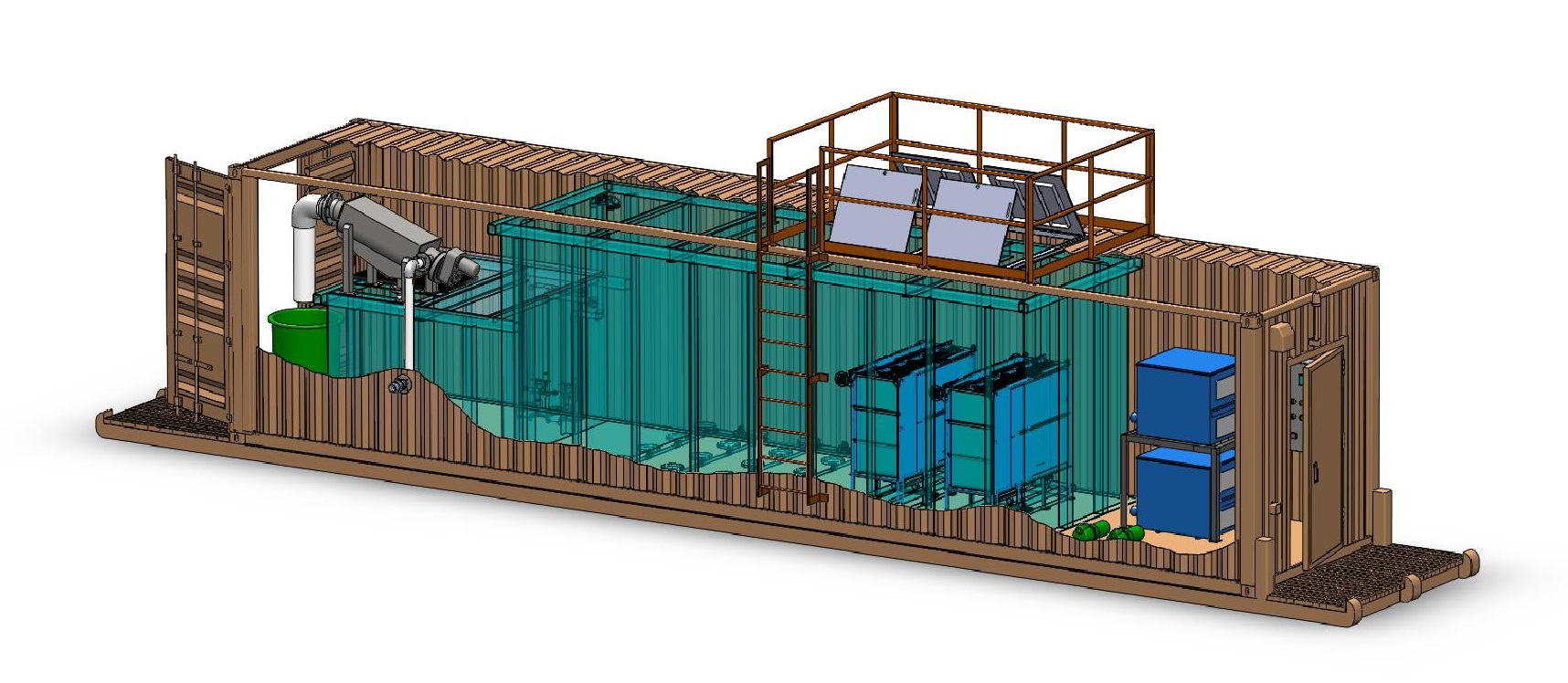The Science Behind Membrane Bioreactor: How It Works and Why It’s Effective
Membrane Layer Bioreactors Discussed: Reliable Solutions for Clean Water
Membrane layer bioreactors (MBRs) have arised as a sophisticated solution for addressing the pressing challenges of wastewater treatment - Membrane Bioreactor. By incorporating organic processes with sophisticated membrane purification, MBRs not only boost the top quality of treated water yet additionally decrease the spatial demands of treatment facilities.

What Are Membrane Bioreactors?
Membrane bioreactors (MBRs) are advanced wastewater treatment systems that combine biological deterioration processes with membrane layer filtration innovation. This integration permits the efficient removal of pollutants from water, making MBRs a preferred selection in various applications, including local wastewater treatment and commercial effluent administration.

Among the important advantages of MBRs is their ability to create premium effluent, commonly suitable for reuse in watering or commercial processes. In addition, MBRs need a smaller sized impact contrasted to standard treatment systems, making them ideal for urban setups where space might be limited.
Additionally, MBRs can effectively deal with varying influent tons and are much less vulnerable to the results of toxic shocks. These features add to their growing appeal as a lasting remedy for dealing with the raising demand for clean water while minimizing ecological influences.
How Membrane Layer Bioreactors Work
While the procedure of membrane bioreactors (MBRs) may appear complicated, it essentially rotates around the synergy between biological procedures and membrane layer purification. MBRs incorporate an organic treatment process, commonly triggered sludge, with a membrane layer separation unit to deal with wastewater successfully.
In an MBR system, wastewater is first presented into a bioreactor where microbes degrade organic issue and other impurities. The organic task lowers the concentration of toxins while advertising the development of biomass. Following this organic therapy, the combined liquor goes through membrane filtration, which can be microfiltration or ultrafiltration, depending on the wanted effluent quality.
The membranes act as a physical barrier, enabling water and little solutes to pass while preserving suspended solids and bigger molecules. This allows the system to keep a high focus of biomass within the reactor, boosting the therapy efficiency.
Moreover, the continual splitting up of treated water from the biomass promotes a portable layout and lessens the footprint of the therapy facility. In general, the combination of biological deterioration and membrane layer filtering in MBRs results in trustworthy and efficient wastewater treatment, making sure high-grade effluent ideal for numerous applications.
Advantages of MBR Modern Technology
Among the crucial benefits of membrane bioreactor (MBR) innovation is its ability to produce top notch effluent with a substantially minimized footprint contrasted to standard wastewater therapy methods. MBR systems successfully integrate organic treatment and membrane layer filtration, causing exceptional removal of impurities, including put on hold solids, pathogens, and raw material. This capacity results in effluent that commonly meets or exceeds stringent regulatory criteria for reuse and discharge.
Additionally, MBR innovation enables higher biomass focus, which enhances the treatment performance and minimizes the required reactor quantity. This small style is especially advantageous in urban areas where room is limited. The functional adaptability of MBR systems likewise means they can adapt to varying influent qualities and flow prices, making them suitable for a large variety of applications.
Furthermore, the minimized sludge manufacturing related to MBR procedures contributes to reduce operational and upkeep expenses. The membranes offer as a physical barrier, minimizing the risk of obstructing and making it possible for longer operational periods in between cleansing. Overall, the advantages of MBR innovation make it an appealing remedy for sustainable wastewater treatment, dealing with both environmental concerns and the demand for efficient source management.
Applications of Membrane Bioreactors
With their versatility and effectiveness, membrane layer bioreactors (MBRs) discover applications across different fields, including municipal wastewater treatment, industrial processes, and even water improvement. In local settings, MBRs give a portable solution for dealing with wastewater, properly eliminating impurities while simultaneously producing top notch effluent that meets rigid regulative standards. This makes them especially suitable for areas with minimal room.
In industrial applications, MBR modern technology is used for dealing with procedure water, specifically in markets such as food and beverage, pharmaceuticals, and petrochemicals. These industries profit from MBRs' capacity to manage high see organic lots and their efficiency in recovering beneficial sources from wastewater, such as nutrients and water.
Furthermore, MBRs play a crucial role in water recovery efforts, making it possible for the reuse of dealt with wastewater for watering, industrial procedures, and even as potable water after more therapy (Membrane Bioreactor). Their effectiveness in removing pollutants and pathogens makes them a dependable selection for guaranteeing water quality in numerous reuse applications
Future of Water Treatment Solutions
The future of water therapy services is positioned for transformative innovations driven by technical advancement and increasing ecological understanding. As international water scarcity becomes a pressing problem, brand-new methods, including membrane bioreactor (MBR) systems, are readied to play an essential function in enhancing the effectiveness and sustainability of water treatment procedures.
Emerging innovations such as expert system get more and machine discovering are anticipated to optimize treatment procedures, allowing for real-time tracking and anticipating upkeep. This will improve the general integrity and performance of water treatment centers. Innovations in membrane materials, such as graphene and nanofiltration, guarantee to boost permeation prices and lower fouling, leading to reduced power intake and functional prices.
Furthermore, the integration of sustainable power sources into water therapy plants will add to greener techniques. The round economic climate version will certainly likewise gain grip, encouraging the recovery of valuable sources from wastewater, such as nutrients and energy.
Conclusion

Membrane bioreactors (MBRs) have actually arised as a sophisticated remedy for addressing the pushing obstacles of wastewater treatment. By find more info incorporating organic processes with sophisticated membrane filtration, MBRs not just improve the top quality of treated water yet additionally minimize the spatial requirements of treatment facilities.One of the key benefits of membrane layer bioreactor (MBR) innovation is its capacity to generate high-quality effluent with a dramatically decreased impact compared to standard wastewater treatment techniques.With their convenience and efficiency, membrane bioreactors (MBRs) locate applications across numerous industries, consisting of community wastewater treatment, commercial procedures, and even water recovery.In final thought, membrane layer bioreactors represent a substantial advancement in wastewater treatment innovation, incorporating organic procedures with reliable membrane filtration to generate top quality effluent.